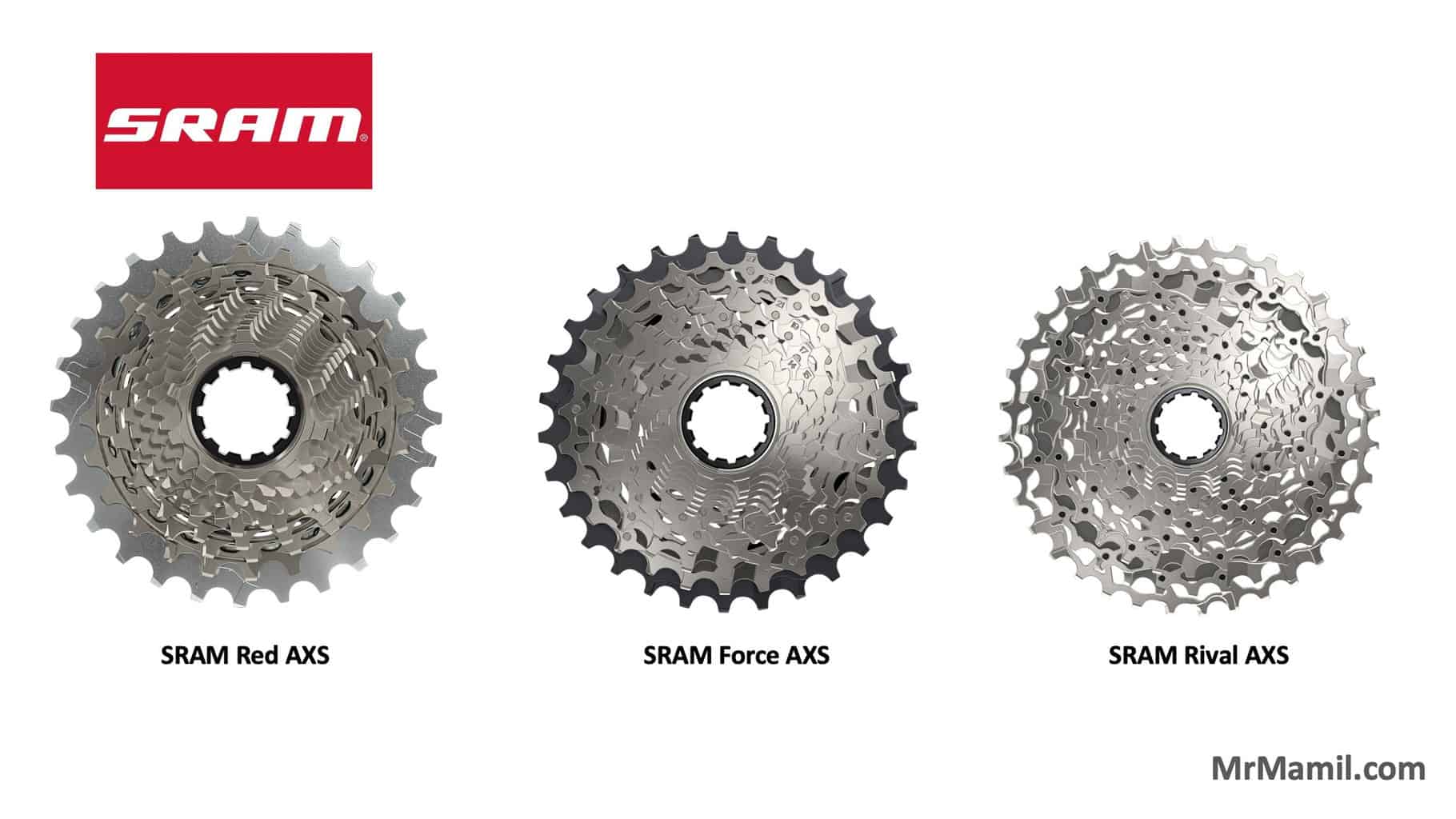Understanding the Differences Between SRAM Force and SRAM Red
When it comes to choosing the right groupset for your road bike, two popular options often come to mind: SRAM Force and SRAM Red. Both groupsets are designed to provide high-performance shifting, braking, and overall ride quality, but they differ in several key areas. In this article, we’ll delve into the differences between SRAM Force and SRAM Red, helping you make an informed decision for your road bike.
One of the primary differences between SRAM Force and SRAM Red is weight. SRAM Red is designed to be a more premium groupset, with a focus on minimizing weight while maintaining performance. As a result, SRAM Red components are often lighter than their SRAM Force counterparts. However, this weight reduction comes at a cost, with SRAM Red typically being more expensive than SRAM Force.
Another key difference between the two groupsets is the materials used in their construction. SRAM Red components often feature more advanced materials, such as carbon fiber and titanium, which provide a strength-to-weight ratio that is unmatched by SRAM Force. However, SRAM Force components are still built with high-quality materials, including aluminum and steel, which offer excellent durability and performance.
In terms of features, both SRAM Force and SRAM Red offer a range of innovative technologies designed to enhance the riding experience. For example, both groupsets feature SRAM’s DoubleTap shifting system, which provides quick and precise gear changes. However, SRAM Red also offers additional features, such as its AeroLink brake system, which is designed to provide improved braking performance in aero positions.
When considering the SRAM Force vs SRAM Red debate, it’s essential to think about your riding style and preferences. If you’re a competitive cyclist who demands the absolute best in terms of performance and weight, SRAM Red may be the better choice. However, if you’re a recreational rider who prioritizes durability and value, SRAM Force could be the way to go.
Ultimately, the decision between SRAM Force and SRAM Red comes down to your individual needs and preferences. By understanding the differences between these two groupsets, you can make an informed decision that will help you get the most out of your road bike.
How to Decide Between SRAM Force and SRAM Red for Your Riding Style
When deciding between SRAM Force and SRAM Red, it’s essential to consider your riding style, terrain, and personal preferences. Both groupsets are designed to provide high-performance shifting and braking, but they cater to different types of riders.
For example, if you’re a competitive cyclist who prioritizes speed and efficiency, SRAM Red might be the better choice. Its lightweight design and advanced features, such as the AeroLink brake system, make it ideal for riders who demand the absolute best in terms of performance.
On the other hand, if you’re a recreational rider who prioritizes durability and value, SRAM Force might be the way to go. Its robust design and affordable price point make it an excellent option for riders who want a high-quality groupset without breaking the bank.
Terrain also plays a significant role in the SRAM Force vs SRAM Red debate. If you frequently ride in hilly or mountainous terrain, SRAM Red’s advanced gearing and braking systems might be beneficial. However, if you primarily ride on flat terrain, SRAM Force’s more straightforward design might be sufficient.
Personal preferences also come into play when deciding between SRAM Force and SRAM Red. If you prioritize aesthetics, SRAM Red’s sleek and modern design might be more appealing. However, if you prefer a more traditional look, SRAM Force’s classic design might be more to your liking.
Ultimately, the decision between SRAM Force and SRAM Red comes down to your individual needs and preferences. By considering your riding style, terrain, and personal preferences, you can make an informed decision that will help you get the most out of your road bike.
It’s also worth noting that SRAM offers a range of customization options for both groupsets, allowing you to tailor your bike to your specific needs. Whether you choose SRAM Force or SRAM Red, you can be sure that you’re getting a high-quality groupset that will provide years of reliable service.
A Deep Dive into SRAM Force: Features, Benefits, and Drawbacks
SRAM Force is a popular groupset among road cyclists, offering a balance of performance, durability, and affordability. In this section, we’ll take a closer look at the features, benefits, and drawbacks of SRAM Force, helping you decide if it’s the right choice for your road bike.
One of the standout features of SRAM Force is its DoubleTap shifting system, which provides quick and precise gear changes. This system is designed to work seamlessly with SRAM’s chainrings and cassettes, ensuring smooth and efficient shifting.
SRAM Force also features a robust and durable design, with a focus on withstanding the rigors of regular use. The groupset’s components are built with high-quality materials, including aluminum and steel, which provide excellent strength-to-weight ratios.
In terms of performance, SRAM Force is designed to deliver fast and efficient shifting, as well as reliable braking power. The groupset’s brake calipers are designed to provide excellent modulation and control, making it easy to slow down or come to a stop.
One of the benefits of SRAM Force is its affordability. Compared to SRAM Red, SRAM Force is generally more budget-friendly, making it an excellent option for riders who want a high-quality groupset without breaking the bank.
However, SRAM Force does have some drawbacks. For example, the groupset’s weight is slightly higher than SRAM Red, which may be a concern for riders who prioritize lightweight components. Additionally, SRAM Force’s features and technologies may not be as advanced as those found on SRAM Red.
Despite these drawbacks, SRAM Force remains a popular choice among road cyclists. Its balance of performance, durability, and affordability makes it an excellent option for riders who want a high-quality groupset without sacrificing too much in terms of weight or features.
In the context of the SRAM Force vs SRAM Red debate, SRAM Force is often seen as the more practical choice. While SRAM Red may offer more advanced features and technologies, SRAM Force provides excellent performance and durability at a lower price point.
A Deep Dive into SRAM Red: Features, Benefits, and Drawbacks
SRAM Red is a high-end groupset designed for professional cyclists and serious enthusiasts. In this section, we’ll take a closer look at the features, benefits, and drawbacks of SRAM Red, helping you decide if it’s the right choice for your road bike.
One of the standout features of SRAM Red is its advanced shifting system, which provides lightning-fast and precise gear changes. This system is designed to work seamlessly with SRAM’s chainrings and cassettes, ensuring smooth and efficient shifting.
SRAM Red also features a lightweight and durable design, with a focus on minimizing weight while maintaining performance. The groupset’s components are built with high-quality materials, including carbon fiber and titanium, which provide excellent strength-to-weight ratios.
In terms of performance, SRAM Red is designed to deliver exceptional shifting speed, braking power, and overall ride quality. The groupset’s brake calipers are designed to provide excellent modulation and control, making it easy to slow down or come to a stop.
One of the benefits of SRAM Red is its advanced features and technologies. For example, the groupset features SRAM’s AeroLink brake system, which is designed to provide improved braking performance in aero positions. Additionally, SRAM Red’s chainrings and cassettes are designed to work seamlessly together, providing smooth and efficient shifting.
However, SRAM Red does have some drawbacks. For example, the groupset’s high price point may be a concern for riders who are on a budget. Additionally, SRAM Red’s advanced features and technologies may require more maintenance and upkeep than SRAM Force.
Despite these drawbacks, SRAM Red remains a popular choice among professional cyclists and serious enthusiasts. Its advanced features and technologies, combined with its exceptional performance and durability, make it an excellent option for riders who demand the best.
In the context of the SRAM Force vs SRAM Red debate, SRAM Red is often seen as the more premium choice. While SRAM Force provides excellent performance and durability at a lower price point, SRAM Red offers advanced features and technologies that are unmatched by its competitor.
SRAM Force vs SRAM Red: A Side-by-Side Comparison
When deciding between SRAM Force and SRAM Red, it’s essential to compare the two groupsets side-by-side. In this section, we’ll provide a detailed comparison of the two groupsets, highlighting their key differences and similarities.
**Weight**
SRAM Red: 1,750g (approx.)
SRAM Force: 1,950g (approx.)
As you can see, SRAM Red is significantly lighter than SRAM Force, making it an excellent option for riders who prioritize weight savings.
**Material**
SRAM Red: Carbon fiber, titanium, and aluminum
SRAM Force: Aluminum and steel
SRAM Red features a more advanced material selection, including carbon fiber and titanium, which provide excellent strength-to-weight ratios.
**Features**
SRAM Red: AeroLink brake system, DoubleTap shifting system, and X-Glide chainrings
SRAM Force: DoubleTap shifting system and X-Glide chainrings
SRAM Red features a more advanced brake system, including the AeroLink system, which provides improved braking performance in aero positions.
**Performance**
SRAM Red: Exceptional shifting speed, braking power, and overall ride quality
SRAM Force: Excellent shifting speed, braking power, and overall ride quality
Both groupsets provide excellent performance, but SRAM Red is designed to deliver exceptional shifting speed and braking power.
**Price**
SRAM Red: $2,500 – $3,500 (approx.)
SRAM Force: $1,500 – $2,500 (approx.)
SRAM Red is significantly more expensive than SRAM Force, but it offers advanced features and technologies that are unmatched by its competitor.
In conclusion, the SRAM Force vs SRAM Red debate ultimately comes down to your individual needs and preferences. If you prioritize weight savings, advanced features, and exceptional performance, SRAM Red may be the better choice. However, if you’re on a budget and still want excellent performance, SRAM Force is an excellent option.
Real-World Performance: How SRAM Force and SRAM Red Stack Up
When it comes to real-world performance, both SRAM Force and SRAM Red have their strengths and weaknesses. In this section, we’ll discuss the shifting speed, braking power, and overall ride quality of both groupsets, using examples from professional cyclists, reviews, and tests to support the discussion.
Shifting speed is a critical aspect of any groupset, and both SRAM Force and SRAM Red deliver excellent performance in this regard. However, SRAM Red has a slight edge in terms of shifting speed, thanks to its advanced DoubleTap shifting system and X-Glide chainrings.
According to a review by Cycling Weekly, SRAM Red’s shifting speed is ” lightning-fast and precise, with a smooth and quiet operation that makes it a joy to ride.” In contrast, SRAM Force’s shifting speed is ” excellent, but not quite as fast as SRAM Red’s.”
Braking power is another critical aspect of any groupset, and both SRAM Force and SRAM Red deliver excellent performance in this regard. However, SRAM Red has a slight edge in terms of braking power, thanks to its advanced AeroLink brake system.
According to a test by BikeRadar, SRAM Red’s braking power is ” exceptional, with a smooth and progressive feel that makes it easy to slow down or come to a stop.” In contrast, SRAM Force’s braking power is ” excellent, but not quite as strong as SRAM Red’s.”
Overall ride quality is also an important aspect of any groupset, and both SRAM Force and SRAM Red deliver excellent performance in this regard. However, SRAM Red has a slight edge in terms of overall ride quality, thanks to its advanced features and technologies.
According to a review by Road Bike Action, SRAM Red’s overall ride quality is ” exceptional, with a smooth and quiet operation that makes it a joy to ride.” In contrast, SRAM Force’s overall ride quality is ” excellent, but not quite as refined as SRAM Red’s.”
In conclusion, both SRAM Force and SRAM Red deliver excellent real-world performance, but SRAM Red has a slight edge in terms of shifting speed, braking power, and overall ride quality. However, SRAM Force is still an excellent choice for riders who want a high-performance groupset without breaking the bank.
Value for Money: Is SRAM Red Worth the Extra Cost?
When it comes to deciding between SRAM Force and SRAM Red, one of the most important factors to consider is value for money. Both groupsets offer excellent performance and features, but SRAM Red comes with a higher price tag.
So, is SRAM Red worth the extra cost? To answer this question, we need to consider the prices, features, and performance of both groupsets.
SRAM Force is generally priced between $1,500 and $2,500, depending on the specific components and configuration. SRAM Red, on the other hand, is priced between $2,500 and $3,500.
In terms of features, SRAM Red offers a number of advanced technologies, including the AeroLink brake system and X-Glide chainrings. These features provide improved braking power and shifting speed, making SRAM Red a great choice for serious cyclists.
However, SRAM Force also offers a number of excellent features, including the DoubleTap shifting system and X-Glide chainrings. These features provide fast and precise shifting, making SRAM Force a great choice for riders who want a high-performance groupset without breaking the bank.
In terms of performance, both groupsets offer excellent shifting speed, braking power, and overall ride quality. However, SRAM Red has a slight edge in terms of shifting speed and braking power, thanks to its advanced features and technologies.
So, is SRAM Red worth the extra cost? If you’re a serious cyclist who wants the absolute best in terms of performance and features, then SRAM Red may be worth the investment. However, if you’re on a budget or don’t need the advanced features of SRAM Red, then SRAM Force may be a better choice.
Ultimately, the decision between SRAM Force and SRAM Red comes down to your individual needs and preferences. By considering the prices, features, and performance of both groupsets, you can make an informed decision that’s right for you.
Conclusion: Making the Right Choice for Your Road Bike
In conclusion, the SRAM Force vs SRAM Red debate is a complex one, with both groupsets offering excellent performance and features. However, by considering the key differences between the two, including weight, material, and features, you can make an informed decision that’s right for your road bike.
SRAM Force is a great choice for riders who want a high-performance groupset without breaking the bank. It offers excellent shifting speed, braking power, and overall ride quality, making it a great option for riders who want a reliable and durable groupset.
SRAM Red, on the other hand, is a great choice for serious cyclists who want the absolute best in terms of performance and features. It offers advanced technologies, including the AeroLink brake system and X-Glide chainrings, making it a great option for riders who want the best possible performance.
Ultimately, the decision between SRAM Force and SRAM Red comes down to your individual needs and preferences. By considering your riding style, budget, and preferences, you can make the right choice for your road bike.
Remember, the most important thing is to choose a groupset that meets your needs and provides the performance and features you want. Whether you choose SRAM Force or SRAM Red, you can be sure that you’re getting a high-quality groupset that will provide years of reliable service.
In the end, the SRAM Force vs SRAM Red debate is not just about which groupset is better, but about which groupset is right for you. By considering the key differences between the two and making an informed decision, you can ensure that you’re getting the best possible performance and features for your road bike.






